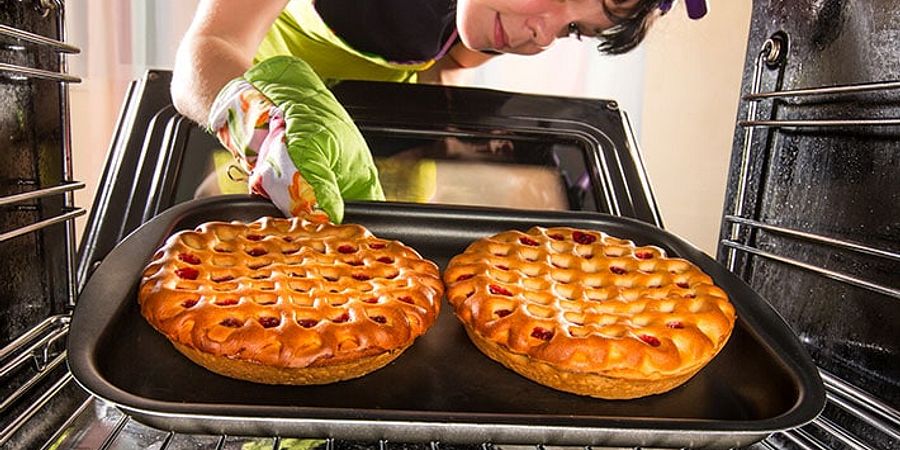Baking Wars: Convection Ovens vs. Conventional Ovens

Creating fluffy cupcakes, creamy cheesecakes, and the perfect crumbly pie crust takes time, skill, and the right oven. No matter how much time you take measuring, stirring, and prepping your food, if it bakes unevenly or burns, all your hard work is destroyed.
The battle between conventional vs. convection ovens has been around since convection ovens originally hit the market in the 1950s. Originally found only in commercial kitchens, convection technology has since made its way into homes across the globe. Nevertheless, which one is better – a convection or conventional oven, and is the more expensive convection oven really worth it?
We’re here to answer all your questions about conventional ovens vs convection ovens so you can find the best range for your needs.
What is the Difference Between Conventional and Convection Ovens
Both convection ovens and conventional ovens cook food by heat sources, but each provides a very different atmosphere for food to cook in. Essentially, conventional ovens cook food by providing hot air created from a radiant heat source at the top of the oven. The heat travels down to the food and cooks it. It’s one of the most common cooking methods and many people are comfortable using a regular oven, and recipes are often written for this standard oven.
On the other hand, convection provides a heat source from every angle and encircles the food in even heat by circulating the interior air with a fan placed in the back of the oven. Since convection cooking has better air circulation, it often promotes browning and crisping better than a conventional oven. With the air inside the oven constantly circulating, many people often find that a convection oven can cook faster.
Conventional Oven vs Convection Oven Cooking Times
When it comes to convection vs regular oven cooking times, you may be surprised to learn that the former can reduce cooking time by 25% by some estimates. A true convection oven heats by circulating air, which helps food heat up quicker.
Conventional Oven vs Convection Oven Temperature
It’s also important to note that conventional ovens often should be set to 25-30°F cooler than their convection counterparts. This means if you have a recipe that calls for something to be set to 350 degrees for a regular oven, if using a convection oven instead, you’d set it to 325 degrees. The inverse is also true. If you had a recipe calling for 325 degrees in a convection oven and you used a regular oven, you’d want to set it to 350 degrees.
It’s important to keep this difference in mind if you’re following a recipe written for an oven different than what you have.
Convection vs Conventional for Baking
And what about baking cookies in convection vs conventional oven? If you want crispy, evenly baked goods, you can’t go wrong with a convection oven. A convection bake offers even heat distribution which can help you perfect perfectly fluffy cupcakes, uniform batches of cookies, and more.
Luckily, it’s easy to adapt a recipe written for a conventional oven for a convection oven. Martha Stewart explains that you can either reduce the temperature by 25 degrees or cut the cooking time by 25%.
How to Maximize the Benefits of Convection and Conventional Ovens
Depending on what you are cooking, both ovens can be beneficial, but for baking, it is convection that comes out the winner as you can see. Because convection ovens circulate heat, they work best for baking because they envelop the entire surface of the cookies or cake.
However, for casseroles, or anything that might be in a high-sided and/or covered dish, a conventional oven may work better because the heat is directed at the top of the food, where it is most needed.
The same rules apply when considering a commercial convection oven vs a conventional oven. However, the majority of commercial kitchens will choose a convection oven because it is more efficient. Or, in some cases, will have both models available depending on their needs.
If a full-size convection oven is not in your budget for your home, try a countertop convection oven option that yields professional results without having to remodel your entire space.
Browse our full selection of convection ovens today.
Share This!